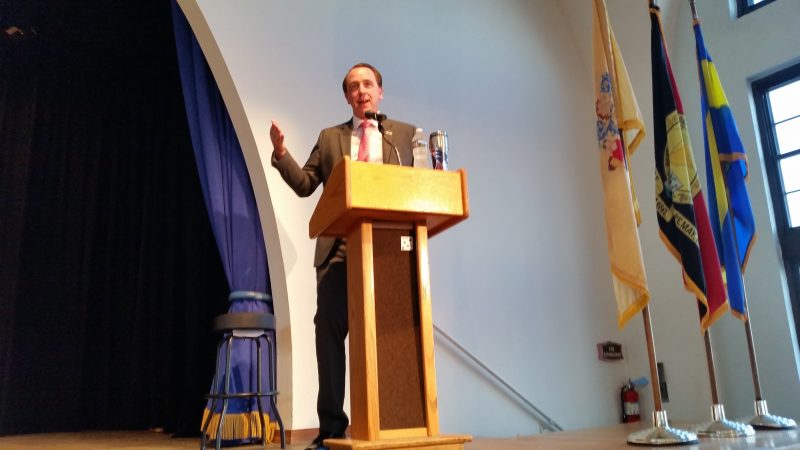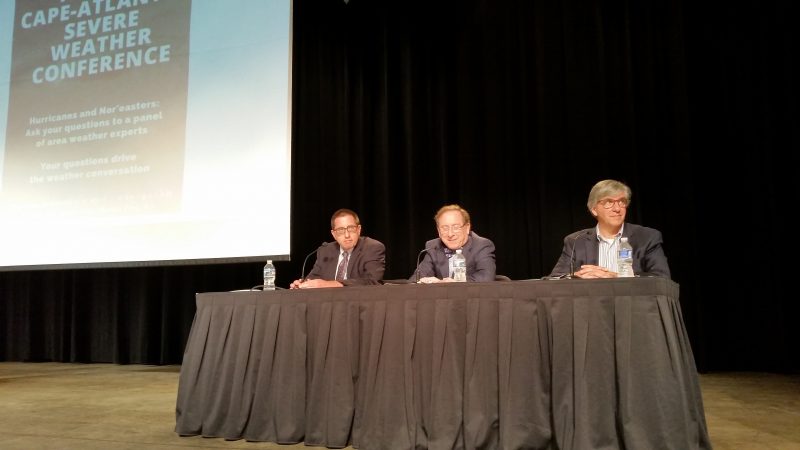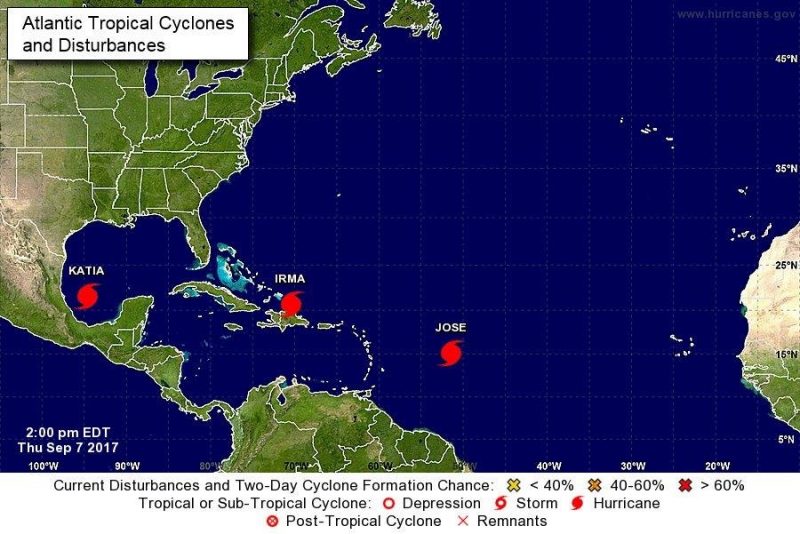
By Donald Wittkowski
As Hurricane Irma churns ominously toward Florida, weather experts warned Thursday night that if such a monstrous storm ever struck the Jersey Shore, it would be catastrophic.
“We would be absolutely devastated by a storm like that,” Jim Eberwine, a retired meteorologist with the National Weather Service in New Jersey, said bluntly.
Speaking at a severe weather conference in Ocean City, Eberwine and other forecasters predicted during a panel discussion that Irma will ultimately cause about $200 billion in damage if it barrels into Florida with a direct hit and possibly moves north through Georgia and the Carolinas.
Meteorologists contemplated a nightmare scenario if a Category 5 hurricane like Irma, packing sustained winds of 175 mph, pummeled the New Jersey coastline. Although the Jersey Shore is certainly no stranger to severe weather – Hurricane Sandy in 2012 and the powerful nor’easter Jonas in 2016 are recent examples – the damage caused by a storm as great as Irma would be almost unimaginable, they indicated.

One of the panelists, Tom Lamaine, a former meteorologist at KYW-TV CBS3 in Philadelphia, said the difficulties of evacuating the Cape May County coast would make conditions even more treacherous for people trying to escape the storm.
“Cape May County is one of the toughest areas to evacuate. How many roads (are there) in and out?” Lamaine pointed out.
The Garden State Parkway, the main evacuation route out of Cape May County, runs parallel to the coast for about 40 miles before it merges with the Atlantic City Expressway. That parallel track exposes parkway motorists to the hurricane dangers until they are able to head westbound, away from the storm, on the expressway, Lamaine noted.
“This is one of the toughest areas to get away from the danger,” Lamaine said.
Although the media’s weather coverage often focuses on the powerful winds produced by major hurricanes, an even more serious danger is the storm surge, the walls of water that crash onto land, the panelists said.

Dan Skeldon a former South Jersey TV meteorologist who co-hosted the severe weather conference with Ocean City, noted that floodwaters kill more people than high winds during a hurricane.
“Storm surge and flooding are more deadly than the wind,” Skeldon said.
Although Irma dominated the panel discussion, the weather experts also focused on the widespread flooding and destruction unleashed by Hurricane Harvey in Texas. Torrential rainfall drenched Texas for days, causing massive flooding in metropolitan Houston. Some areas of Texas reported about 50 inches of rain.
“The flooding is what did in Houston, Texas, not the wind,” Lamaine said.
Meanwhile, the latest forecast for Irma’s path is still unfolding. The Florida Keys are expected to get pounded. Some forecasting models suggest that the hurricane may bend a bit, just to the east of the Florida coast. Other models indicate the storm will pass over Miami, according to news reports.
Whatever course the hurricane ultimately takes, the panelists were reasonably sure that Irma could become a $200 billion storm. Eberwine said if Irma slams straight into Tampa on Florida’s west coast, it would be a “major, major disaster.”
Another panelist, Glenn “Hurricane” Schwartz, a meteorologist for NBC10 in Philadelphia, said the country seems to have forgotten the lessons of the devastating “Great Miami” hurricane in September 1926.
“We’ve known this forever, that this is an incredibly vulnerable area,” Schwartz said of south Florida.

The warm waters surrounding Florida on both the Atlantic and Gulf of Mexico sides will only provide more fuel for Irma, the meteorologists warned.
“These hurricanes are heat-seekers. They look for warm waters,” Eberwine said.
The panelists repeatedly urged members of the audience at the Ocean City Music Pier to draw up an escape plan well in advance of a hurricane’s arrival. Skeldon praised Ocean City for hosting the public weather conference, saying that it shows the town is “one of the most proactive” communities in preparing its residents for severe storms.
Members of the audience were able to ask questions of the panelists during the three-hour conference, which also included a demonstration of how drones are being used for emergency management and storm response.
One audience member, Rob Neumann, a former Ocean City resident who now lives in Linwood, said he is convinced that a major hurricane, perhaps as strong as Irma, will eventually slam into the Jersey Shore.
“Whether or not it happens in my lifetime, I’m not sure. But it’s not a matter of if, but when,” Neumann said. “With the barrier islands, a Category 3 or 4 hurricane is possible at the Jersey Shore.”
Neumann, a self-described “weather nerd,” warned that even the historic, oceanfront Music Pier, the venue for the weather conference, is at risk.
“A direct hit on Ocean City and this building would be swept into the water,” he said.








